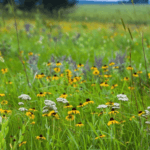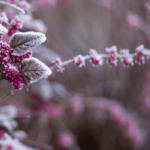
Beautiful flowers gardenia Plants For Your homes
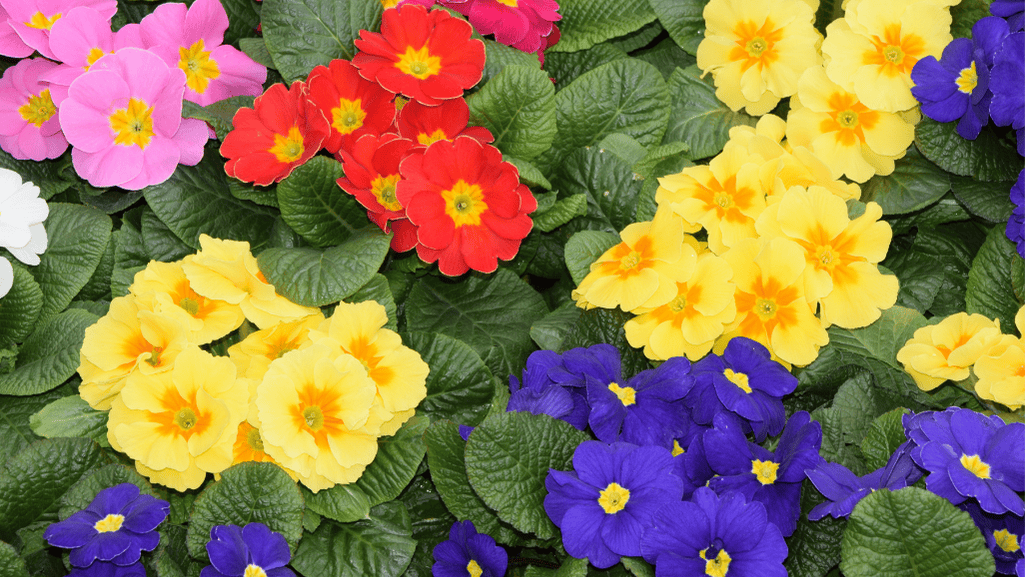
As winter fades, primrose flowers start to bloom, filling the air with color. These spring flowers are a treat for gardeners and nature fans. They come in over 400 types, mainly in the Northern Hemisphere.
Primroses have many colors, from soft pastels to bright ones. They brighten up garden beds and borders. With so many primrose varieties, there’s one for every gardener.
Primroses not only brighten the garden but also help bees and butterflies. They signal spring’s start and warmer days to come. Let primroses bring joy and inspiration to your garden.
Primrose flowers are part of the Primulaceae family. They are beautiful signs of spring that attract gardeners and nature lovers. With over 400 types, including the lovely cottage primrose (Primula x polyantha), they bring color to the landscape. Their unique yellow ‘eye’ adds warmth and depth, making them stand out in gardens.
Primroses are diverse, fitting different climates and places. They range from the English primrose (Primula vulgaris) to the Japanese primrose (Primula japonica). These flowers come in various shapes, sizes, and colors. The English primrose blooms in April and spreads 6 to 8 inches. The Japanese primrose flowers in May and June, showing pink, dark rose, and white colors on 12 to 18-inch spikes.
Primroses are not just pretty; they help pollinators like insects and butterflies. They support the health and variety of ecosystems.
In England, primroses have a deep history and cultural importance. They were once common in the wild. The common primrose, cowslip, and oxlip were once seen as one species but are now recognized as different ones. These flowers hold a special place in the hearts of many, reminding them of nature.
Primroses have been used in many ways, from salads to herbal remedies. In the Victorian era, they became more popular, leading to new types of primroses. These new varieties added more colors and shapes to these beloved flowers.
| Primrose Species | Blooming Time | Colors |
|---|---|---|
| English Primrose (Primula vulgaris) | April | Pale Yellow |
| Japanese Primrose (Primula japonica) | May – June | Pink, Dark Rose, White |
| Cherry Blossom Primrose (Primula sieboldii) | Spring | Cherry Red, White, Lavender, Pink |
Today, primroses are loved by gardeners and fans all over the world. With their many types, colors, and times of bloom, they offer endless ways to make beautiful gardens. These flowers bring the beauty and wonder of spring to our lives.
Primroses are truly magical, with over 500 species in the Primula genus. This variety offers gardeners many options to brighten their gardens. From the common primrose to the Japanese and drumstick primrose, each type has its own special look and feel.
The common primrose is a favorite wildflower, known for its simple, single flowers on 6-inch stems. It’s famous for its interesting sports, like the hose-in-hose form, where flowers are layered inside each other. This primrose is loved for its beauty and easy care.
The Japanese primrose is perfect for gardens near water or in moist soil. It shows off pink, red, or white flowers on 18-inch stems. This primrose adds elegance and height, making it a highlight in any garden.
Coming from the Himalayas, the drumstick primrose stands out with its unique mauve, lavender, or reddish-purple flowers. It’s tough, surviving cold temperatures down to zone 3. Its unusual shape and bright colors make it a standout in any garden.
| Primrose Variety | Hardiness Zone | Height | Flower Color |
|---|---|---|---|
| Common Primrose (Primula vulgaris) | Zones 4-8 | 6 inches | Various colors |
| Japanese Primrose (Primula japonica) | Zone 4 | Up to 2 feet | Pink, red, white |
| Drumstick Primrose (Primula denticulata) | Zone 3 | 15 inches | Mauve, lavender, reddish-purple |
With so many primrose species to choose from, gardeners can create beautiful displays. Whether you like the delicate look of the common primrose, the elegance of the Japanese, or the unique charm of the drumstick, there’s a primrose for every garden.
Primrose flowers signal the start of spring with their bright colors and delicate petals. They begin to bloom after the winter, taking about 4-6 weeks to fully open. Once open, they can brighten your garden for 3-6 weeks, depending on the weather and moisture.
The life cycle of primroses is interesting. Even after they stop flowering, their leaves stay green and keep making food. This helps them grow and bloom again in the future. They can also spread by growing new plants from their roots or leaves, ensuring they survive and grow even in tough years.
When do primroses bloom? It depends on the type, but usually, it’s in early spring to early summer. The English Primrose is great for cooler areas and grows in USDA zones 4-8. These plants are small, reaching 6-12 inches tall and 8-9 inches wide. They’re perfect for borders, rock gardens, and woodland areas.
| Primrose Variety | Height | Width | Bloom Time |
|---|---|---|---|
| English Primrose (Primula vulgaris) | 6-12 inches | 8-9 inches | Early spring |
| Drumstick Primula (Primula denticulata) | 8-12 inches | 8-12 inches | Mid to late spring |
| Miller’s Crimson (Primula japonica) | 12-18 inches | 12-18 inches | Late spring to early summer |
When planning your garden, think about when primroses bloom and how they can work with other spring flowers. They bloom for a long time and can spread in the right conditions. Let primroses bring joy and beauty to your garden this spring.
Primrose flowers have bright and varied colors that have won the hearts of many across cultures and history. Each color has its own meaning, making these flowers special. From sunny yellow to soft pink, they bring different feelings and thoughts.
Primroses come in many colors, each with its own special meaning. Yellow primroses symbolize joy, happiness, and friendship. They brighten up anyone’s day with their warmth and optimism.
Pink primroses stand for grace, femininity, and new love. Their gentle look shows innocence and admiration. White primroses mean purity, innocence, and new starts. They’re great for weddings or showing support.
Purple primroses are linked to healing, purity, and royalty. Red ones show passion and charm, perfect for a special someone. Blue primroses, though rare, symbolize safety and protection from evil.
| Primrose Color | Meaning |
|---|---|
| Yellow | Happiness, joy, friendship |
| Pink | Grace, femininity, young love |
| White | Purity, innocence, new beginnings |
| Purple | Healing, purity, royalty |
| Red | Passion, charm |
| Blue | Safety, protection against dark spirits |
Primroses mean more than just their colors. In stories and folklore, they mark spring’s arrival and life’s fleeting nature. William Shakespeare mentioned them in “A Midsummer Night’s Dream” and “Hamlet,” linking them to youth and love.
In myths, primroses connect to goddesses like Freyja, Venus, and Aphrodite. These goddesses were linked to love, beauty, and fertility. In medieval times, people saw primroses as protectors against evil.
Today, primroses still hold a special place. In the Victorian era, they were a secret way to show feelings. Now, they’re a symbol of youth, hope, and renewal for February birthdays.
Whether you like the bright yellow, soft pink, or deep purple, primroses add depth and emotion to spring. Knowing their meanings lets you pick the perfect color to share your feelings and celebrate nature’s beauty.
To grow a beautiful primrose garden, you need to give them the right conditions. Know what they need for soil, sunlight, and water. This will help you make a garden full of these lovely spring flowers.
Primroses do well in soil that drains well and is rich in humus, with a slightly acidic pH. Add organic stuff like compost, aged manure, or leaf mold to the soil. This helps with drainage and keeps the soil moist, perfect for primrose roots. Try to keep the soil pH between 6.0 and 6.5 for the best growth.
Primroses like partial shade, especially in hot places. They do well in dappled sunlight or where they get morning sun and afternoon shade. In cooler areas, they can take more sun, but watch out for the hot midday sun. Planting them near tall plants or under deciduous trees gives them just the right amount of light and shade.
| Primrose Variety | Sunlight Preference |
|---|---|
| Primula vulgaris (Common Primrose) | Partial shade to full shade |
| Primula denticulata (Drumstick Primrose) | Partial shade |
| Primula japonica (Japanese Primrose) | Partial shade to full shade |
| Primula x polyantha (Polyanthus Primrose) | Partial shade |
Primroses like their soil to be consistently moist, needing about an inch of water each week. Make sure to water them regularly, especially when it’s dry. But don’t overwater, as they can get root rot in too much water. Mulching with things like bark chips or straw helps keep the soil moist and cool, which is good for the primroses.
Give primroses the right soil, sunlight, and water, and you’ll have a beautiful garden. Their bright colors and gentle beauty will make your outdoor space joyful and magical.
 Primrose flowers add a pop of color and charm to any garden. To grow and multiply these lovely blooms, learn the best planting and primrose propagation methods. Whether starting with seeds or dividing mature plants, you can create a stunning primrose display.
Primrose flowers add a pop of color and charm to any garden. To grow and multiply these lovely blooms, learn the best planting and primrose propagation methods. Whether starting with seeds or dividing mature plants, you can create a stunning primrose display.
Planting primrose seeds is a rewarding way to grow these flowers. For the best results, sow seeds in winter since many types need cold to germinate. Use a seed compost that drains well and keep the soil moist until the seeds germinate. Here are tips for successful primrose planting from seeds:
Once seedlings have a few true leaves, move them to individual pots or cell trays. Care for them until they’re big enough for the garden, spacing them 6-12 inches apart.
Dividing primrose plants is a great way to keep them healthy and increase your collection. Do this every 3-4 years to maintain your primroses. Here’s how to divide and transplant them:
When picking a spot for your primroses, choose partial shade and well-drained soil. These flowers like moist soil but can rot if it’s too wet. Adding compost to the soil helps with drainage and gives nutrients for growth.
| Primrose Planting Spacing | Primrose Height | Hardiness Zone |
|---|---|---|
| 6-12 inches apart | 8-12 inches tall | 3a – 8b |
By using these tips for planting and propagating primroses, you can enjoy a beautiful garden full of these lovely flowers. Whether starting with seeds or dividing plants, with the right care, your primroses will bloom beautifully every year.
 Primrose care is a fun journey that brings vibrant blooms and healthy plants. To make sure your primroses do well, give them the best growing conditions. They love temperatures between 50-70 degrees Fahrenheit and need several hours of sunlight a day. Also, they need soil that drains well and is rich in nutrients.
Primrose care is a fun journey that brings vibrant blooms and healthy plants. To make sure your primroses do well, give them the best growing conditions. They love temperatures between 50-70 degrees Fahrenheit and need several hours of sunlight a day. Also, they need soil that drains well and is rich in nutrients.
For primrose maintenance, know that they bloom for a few months and might not need much fertilizer. But, if you have primrose houseplants, feed them once a month when they’re blooming. Be careful not to overwater, as this can cause root rot. Pinching off old blooms can make them bloom more often, keeping them looking great.
Indoor primroses need bright light to grow well. They do best in temperatures between 50 and 65 degrees Fahrenheit. Don’t let them get too hot. After a few weeks of blooming, replace the old foliage with new plants to keep them looking fresh.
When moving primrose plants from inside to outside, do it slowly and give them some shade. This helps them adjust and stay healthy. By following these primrose care tips, you can enjoy these spring beauties in your garden or home.
| Primrose Variety | Height | Spread |
|---|---|---|
| Primula ‘Gold Laced Group’ | 25cm | 30cm |
| Primula veris | 25cm | 25cm |
| Primula beesiana | 50cm | 50cm |
| Primula sikkimensis | 90cm | 60cm |
| Primula denticulata | 45cm | 45cm |
| Primula ‘Alison Holland’ | 50cm | 30cm |
| Primula capitata ‘Noverna Deep Blue’ | 30cm | 30cm |
| Primula florindae | 1.2m | 90cm |
Primroses are usually pest-free but can get spider mites in hot, dry weather or slug damage in wet conditions. Check your plants often and take steps to keep pests away. This includes keeping the soil moist and removing any damaged leaves.
With the right care and maintenance, primroses will bring you joy with their bright colors and lovely presence. They add beauty to your garden or home, showing off the magic of spring.
 Primroses add a burst of color and charm to any garden. They come in over 400 species, making them versatile for different garden styles. This variety makes them easy to fit into your landscape design.
Primroses add a burst of color and charm to any garden. They come in over 400 species, making them versatile for different garden styles. This variety makes them easy to fit into your landscape design.
Choosing the right plants to grow with primroses is key for a beautiful garden. These flowers do well in zones 2 to 8 and like soil that drains well. They can even grow in some shade.
Here are some great plants to grow with primroses:
Primroses can be used in many landscaping styles. Here are some ideas:
Think about the colors and times when plants bloom when designing with primroses. They grow from 6 to 24 inches tall and spread 6 to 18 inches. This makes them easy to fit into different garden designs.
| Primrose Variety | Height | Spread | Hardiness Zones |
|---|---|---|---|
| English Primrose (Primula vulgaris) | 6-12 inches | 8-9 inches | 4-8 |
| ‘Blue Ripples’ Primrose (Primula vulgaris) | 5-8 inches | 10-12 inches | 3-8 |
| ‘Oakleaf Yellow Picotee’ Primrose (Primula vulgaris) | 12-18 inches | 12-18 inches | 4-8 |
| Drumstick Primula (Primula denticulata) | 8-12 inches | 8-12 inches | 3-8 |
By choosing the right plants and designing thoughtfully, you can make beautiful gardens with primroses. These flowers add color and beauty to your garden in the spring.
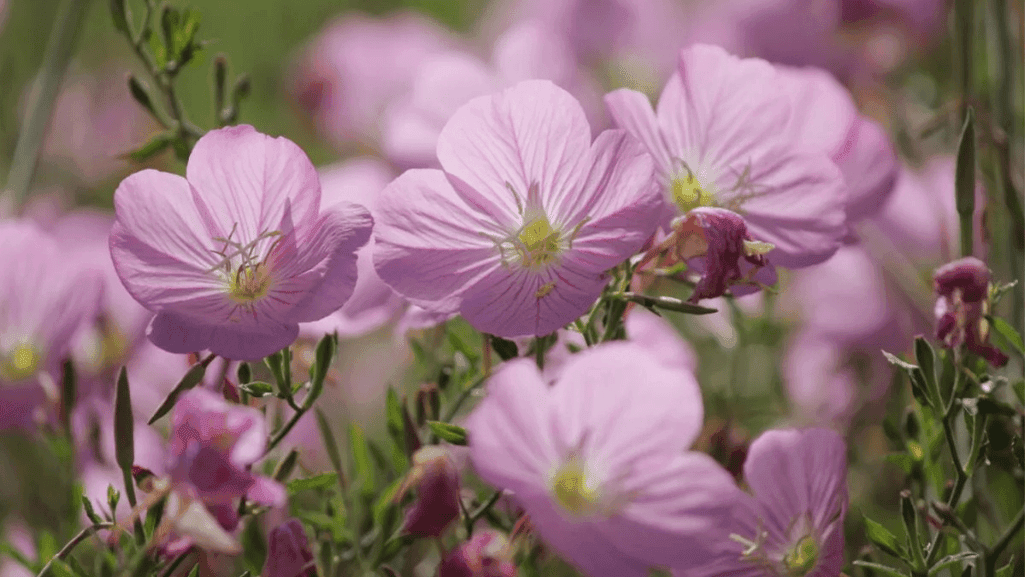 Primrose flowers have inspired many artists and writers. They are known for their beauty and vibrant colors. These flowers have appeared in literature and art, leaving a lasting impact.
Primrose flowers have inspired many artists and writers. They are known for their beauty and vibrant colors. These flowers have appeared in literature and art, leaving a lasting impact.
From William Shakespeare to Claude Monet, primroses have been celebrated. They are known for their symbolic meaning and beauty.
In the Victorian era, primroses became popular in art. Artists like Walter Crane and Jane Elizabeth Giraud captured their beauty. Impressionist painters like Vincent van Gogh, Claude Monet, and Pierre-Auguste Renoir also used primroses in their work.
These artists showed the flower’s soft petals and bright colors. They made sure to capture their beauty on canvas.
One famous painting is Vincent van Gogh’s “Vase with Red Poppies and Daisies and Blue Primroses.” It shows the artist’s skill with color and arrangement. The primrose flowers add a delicate touch to the bold red poppies.
Primroses have appeared in works by William Shakespeare, John Milton, and Emily Dickinson. Shakespeare mentioned primroses seven times, linking them to youth and the fleeting nature of life. The poem “The Primrose” by Robert Herrick celebrates the flower’s beauty and its link to spring.
Shakespeare’s phrase “primrose path” means taking an easy path in life. This phrase shows the deep meaning of primroses in literature.
| Author | Work | Primrose Reference |
|---|---|---|
| William Shakespeare | Hamlet | “Himself the primrose path of dalliance treads” |
| John Milton | Lycidas | “Bring the rathe primrose that forsaken dies” |
| Emily Dickinson | Poem 28 | “The Primrose of his native rock” |
Primroses in art and literature show their lasting charm and meaning. They inspire and captivate us, reminding us of nature’s beauty and resilience.
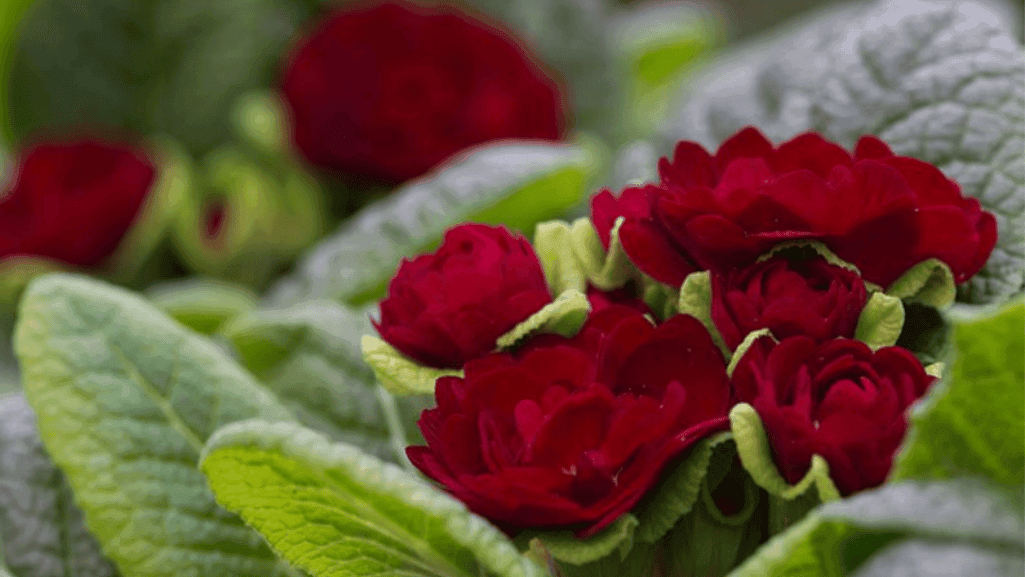 Primroses are known for their many uses in medicine and cooking. They bring beauty to gardens and also have health benefits and tasty recipes. Let’s dive into the world of primrose medicinal uses and culinary uses.
Primroses are known for their many uses in medicine and cooking. They bring beauty to gardens and also have health benefits and tasty recipes. Let’s dive into the world of primrose medicinal uses and culinary uses.
For a long time, primroses have been used in traditional medicine. Evening primrose is especially interesting for its health benefits. Its oil is full of gamma-linoleic acid (GLA), a fatty acid not common in plants. GLA helps with many health issues like:
Evening primrose roots were once used for bruises, piles, and to boost muscle strength. The leaves helped with minor wounds, stomach issues, and sore throats. But, evening primrose might not be safe for pregnant women, people who have seizures, or those with schizophrenia.
Primroses are also great in the kitchen. You can use the whole plant in different ways. Here are some ideas to use primrose in your cooking:
When cooking with primrose, remember that evening primrose oil doesn’t last long and should be kept cold. Primrose leaves and roots have vitamins and minerals that are good for you.
| Primrose Variety | Medicinal Uses | Culinary Uses |
|---|---|---|
| Evening Primrose | Eczema, PMS, arthritis | Edible roots, leaves, flowers, seeds |
| Common Primrose | Wound healing, skin ailments | Raw flowers in salads, cooked leaves |
Exploring primroses can be exciting, but always be careful and talk to doctors before using them for health reasons. These lovely flowers can inspire you to make tasty primrose recipes and enjoy their primrose health benefits.
The primrose flower has captured hearts and inspired creativity for centuries. It has a rich history and cultural significance. From Irish mythology to Victorian times, it’s known for its beauty and versatility. The primrose’s beauty makes it a favorite in gardens around the world.
To grow primroses, you need the right conditions. This includes humus-rich soil, partial shade, and consistent moisture. These flowers attract birds and butterflies and can be a groundcover. They are adaptable and can thrive in various soils and are drought-resistant.
Primroses have been used for medicine and cooking for a long time. Ancient texts show they were used for treating health issues. Grimoires suggest they were used in love charms and rituals. They symbolize spring, renewal, and the beauty of life’s fleeting moments. Primroses are valued for their beauty and practical uses in our world.



